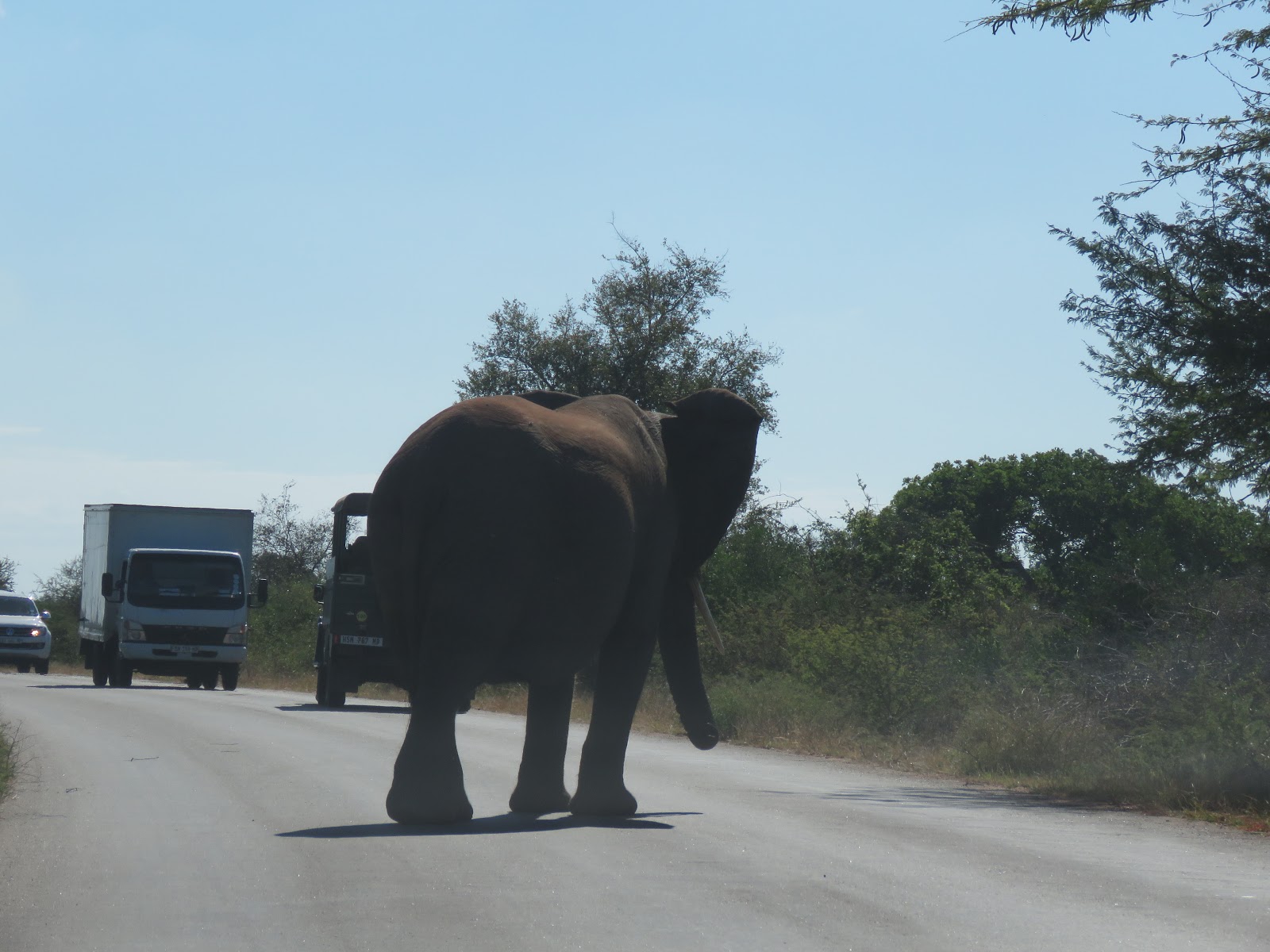 |
| A lion photo was taken by a local across the Crocodile River, but not the lion spotted on Leeu Street. |
“Sighting of the Day in the Bush”
 |
| We’d never seen this warthog until last night when he stopped by. The left wart appeared injured and infested with maggots. Since warthogs are so abundant in Marloth Park, nothing is done when they are injured. Veterinary care is expensive. Nature takes its course. |
Yesterday when we received a notice from Louise that a lioness was on the loose in Marloth Park, a chill ran up our spines. Not only were we excited about this event, but we went on a mission to see if safari luck would prevail, and we’d spot it and have an opportunity to take a photo.
 |
| Hippos lounging in the Sabie River in Kruger. |
The likelihood of finding her in this vast expanse of 3000 hectares (7413 acres, 11.5 square miles) is comparable to finding a needle in a haystack. Once the post was uploaded, we headed out with extra fully charged batteries. I wanted to have to camera turned on at all times, just in case.
 |
|
“The name hippopotamus comes from the Ancient Greek ‘river horse.'”
|
We followed the roads where she was last seen on the street called Leeu, weaving in and out of all possible routes hoping for a glimpse. Well, we didn’t expect to get lucky, and we weren’t.
 |
| “An adult hippo needs to resurface every 3 to 5 minutes to breathe.” |
We saw elephants on the river, giraffes on the savanna, and an ostrich under a carport, but we stopped for nothing, fearing that one minute’s change of plans could cause us to miss her. Of course, this concept can go either way…stop for something else, and then…we’d see her.
 |
| “Hippos bask on the shoreline and secrete an oily red substance, which gave rise to the myth that they sweat blood. The liquid is a skin moistener and sunblock that may also protect against germs.” |
After two hours, we gave up and stopped at Daisy’s Den for birdseed when Mark, the shop owner, told us his mother-in-law saw the lioness chasing a young kudu across the tar road. Nature can be cruel, but that’s the reality of life in these parts.
 |
| “Despite its stocky shape and short legs, it can easily outrun most humans. Hippos have been clocked at 30 km (19 km) over short distances.” |
Everyone in this little holiday village is alert based on warnings to avoid walking, especially at night. One must pay special attention, getting into and out of cars, shops, restaurants, and their own homes. One cannot assume that walking from a restaurant to their vehicle is safe at night or during the day.
 |
| Thanks, Louise Barnfield in Kauai, for identifying this bird…a reed cormorant. |
Are we scared? Not at all. Nor does it affect our sitting on the veranda day and night. The veranda is six steps up from ground level. It’s unlikely a lion would climb the steps to get to us when there’s usually much more readily accessible wildlife nearby.
 |
| A giraffe’s neck contains huge amounts of muscle. But that is not what is holding its neck so high. It is a band of elastic tissue, a ligament that runs from the top of the neck to the start of tail vertebrae. |
We do not doubt that a few of our visitors may already have fallen prey to the lion’s appetite. Even with few predators in Marloth Park itself, most of the wildlife’s instincts will drive them to run as fast as they can if they hear or spot a lion.
 |
| “Gnus, or wildebeests, are large African antelopes. Wildebeest is an Afrikaans name that means “wild beast.” Gnu is a derivation of the name used by native Africans. The names are used interchangeably. A gathering of gnus is called a herd.’ |
The acuity of the hearing of wildlife in the park is incomprehensible to us, but outrunning a lion would be difficult when bush homes and other man-made structures impede their ability to run at their top speeds.
 |
| Calf nursing in Kruger National Park. |
This afternoon, we’ll head out once again with hope, albeit foolhardy, of spotting the lioness and taking our photo to share here with all of our readers.
 |
| “African fish eagles are very efficient hunters and only hunt for about 10 minutes each day. Besides fish, they also eat young birds, monkeys, baby crocodiles, and frogs.” |
Thanks for stopping by, dear readers. We look forward to seeing you soon!
Photo from one year ago today, June 23, 2017:
 |
| After the boat ride on Father’s Day, we drove past the new Minnesota Vikings US Bank Stadium (football) for this shot. For more photos, please click here. |










































































































